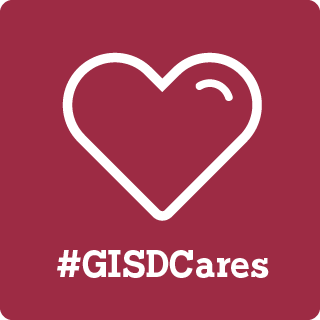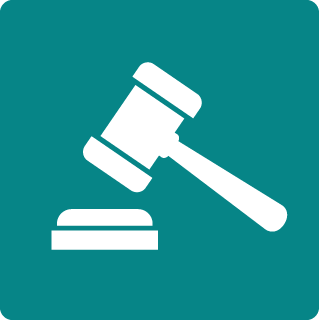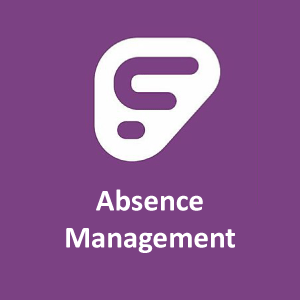

Video Transcript
Is My Student Eligible for Section 504?
This video is a follow up to our first video, “What is Section 504?” if you have not seen it yet, pause this video and go watch that one first. Ok, now that we have a basic understanding of what Section 504 is and what it does, let's take a closer look at what qualifies a student for Section 504.
For the sake of clarity, student eligibility for Section 504 will be discussed in reference to two questions. The first is “what makes a student eligible?”, and the second is “How does the Section 504 committee determine eligibility?”. In this video, we will start with the question “What makes a student eligible?”.
According to Section 504, a student may be eligible for a Section 504 Plan and accommodations if they “have a physical or mental impairment that substantially limits one or more major life activity”. This description is broad for a reason. Since the main purpose of Section 504 is to prohibit discrimination against individuals with disabilities, it’s important to make sure that anyone suspected of having a disability is evaluated. Now let’s dive in.
The first aspect of our broad statement that we will be looking at is “physical or mental impairment”. While there is no specific definition of qualifying disorders like the thirteen categories outlined under IDEA law, the Office for Civil Rights (OCR) has given an outline for what impairments may qualify a student for Section 504 accommodations.
According to the OCR, physical and mental impairments are “any physiological disorder or condition, cosmetic disfigurement, or anatomical loss affecting one or more of the following body systems: neurological; musculoskeletal; special sense organs; respiratory, including speech organs; cardiovascular; reproductive; digestive; genito-urinary; hemic and lymphatic; skin, or endocrine and any mental or psychological disorder.”
Wow! That is an overwhelming list! But what does all of this information mean? In order to understand it, let's begin by looking at the physical impairments outlined. Physical impairments include cosmetic defects, anatomical differences and anything that affects one of the 11 body systems. Any physical disability that affects the body in any way, has the potential to qualify a student. It’s important to evaluate all students with disabilities so they have equal access to participate in school programs.
Medical diagnosis of a disability is helpful for decision-making, but not required under Section 504. Some examples of potentially qualifying physical impairments would be asthma and diabetes which are disorders that affect the respiratory and endocrine systems respectively. Another example would be a student with a limb difference potentially qualifying under anatomical differences.
Mental impairments are described by the OCR as “any mental or psychological disorder”. Examples of Impairments under this category migh include ADHD, autism, or emotional disturbances. Case in point, the data collected during the evaluation may support extra time on tests and quizzes for a student with ADHD that affects his ability to concentrate. It’s important to keep in mind here that Section 504 provides accommodations to the general education classroom to level the playing field and prevent discrimination.
Before moving on from impairment, I want to stress that none of the lists previously described or outlined by the OCR are exhaustive. Regardless of the impairment, the Section 504 committee determines eligibility on a case-by-case basis based on the data.
Now that we have a better understanding of what may be a qualifying impairment, it's time to dive into part two of our statement, “Major life activity”. According to the U.S. Department of Education, major life activities include but are not limited to, “caring for oneself, performing manual tasks, seeing, hearing, eating, sleeping, walking, standing, lifting, bending, speaking, breathing, learning, reading, concentrating, thinking, communicating, and working. Major bodily functions also count, including the functions of the bowels, bladder, brain etc.
While some of the major life activities on their list are directly school related like learning and concentrating, many are not. This is an important distinction because all aspects of the school day must be considered when thinking about the life activities affected. Many people think accommodations only apply to the classroom, however they can be applicable to any part of the school day including transitions, lunch, recess, and the rest of school-based activities.
One example would be a student who struggles with focusing in math class because of anxiety. In this example, the life activity is focusing. Another example is a student who may not be able to participate appropriately in gym class because of wheelchair use requiring accommodations. In this example, the life activity limited is walking/running so an accommodation might be made.
The last aspect of our statement that has not been discussed yet is “substantially limits”. A student may have an impairment, but if it does not substantially limit a student’s ability to perform a major life activity, the student would not qualify under Section 504. To “substantially limit” means the student’s impairment greatly affects their performance of major life activities.
When determining if a disability substantially limits a major life activity, there are two questions that must be considered. 1. Does the condition substantially limit a student's school participation prior to mitigating measures? And 2. Is it a transient or minor disability? Mitigating measures include things like medication, prosthetics, and assistive technology.
A student’s eligibility must be determined as if they do not have these items. For example, does a student’s ADHD substantially limit their ability to participate in school when not on their medication? If so, then they are eligible for a Section 504 evaluation.
Transient or minor disabilities are not covered under Section 504. If a student has an impairment with “an actual or expected duration of six months or less” it’s not covered. If a student breaks his arm and will be in a cast for 6 weeks, he does not qualify for accommodations under Section 504 because it’s not a qualifying condition.
Teachers and other school staff can still provide assistance for the student, it is just not legally required under Section 504. Episodic conditions on the other hand, are covered by Section 504 including seizure disorder, cancer (active and in remission) and other similar conditions. This means that a student with a seizure disorder may qualify for Section 504 accommodations for their seizures even if they have not had one in months or are on medications that help suppress it.
Now that we have gone in detail through all aspects of our “seemingly simple” qualification, we can now address our second overarching question, “How does the Section 504 committee determine eligibility?” Through collecting data! Section 504 does not conduct assessments in the same way that special education does, so data is the key for determining a student’s eligibility.
Data is collected through test scores, patterns of behavior, observations in the classroom, diagnosis from doctors, discussions with teachers, parents, and other staff that interact with the student and anything else that may be deemed useful for determining eligibility. This data is collected in order for the school to determine if a student meets all criteria for eligibility. Once this data driven evaluation has been completed, the initial Section 504 meeting can be held and eligibility determined.
Since we now know how disability is defined under Section 504 and how we can apply it to our students, I want to reiterate once more that no list mentioned in this video is exhaustive and student eligibility is determined through an evaluation of the data. Remember, to be eligible under Section 504, a Section 504 committee must determine that a student has a qualifying impairment and it substantially limits one or more major life activities.
Parents, if you suspect your child has a qualifying impairment based on the previously outlined information, contact your student’s Section 504 campus coordinator if in elementary or middle school and testing/Section 504 advisor for high school students.
Additional questions can be directed to the previously stated faculty, campus Section 504 administrators or the district contact, Dr. Wendy Brower. And there you have it! All the details you need to know about student eligibility and qualifying for Section 504! Thanks for watching!











